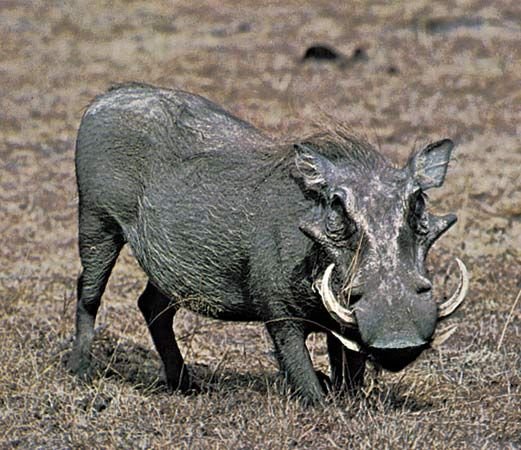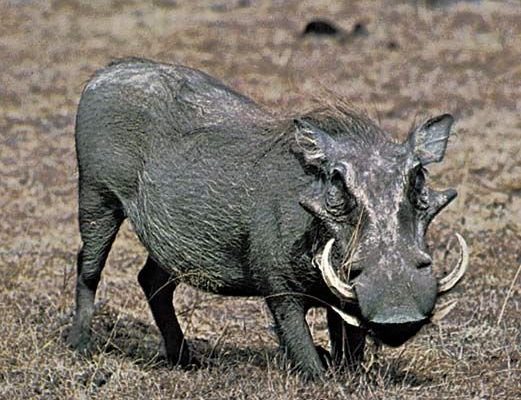
Warthogs, scientifically known as *Phacochoerus africanus*, belong to the wild pig family, and they’re mostly found across sub-Saharan Africa. Their rugged appearance and playful behavior often leave a lasting impression on those fortunate enough to observe them in the wild. But how did these creatures get to where they are today? Let’s dig into their evolutionary journey, one fascinating step at a time.
What Are Warthogs?
Warthogs are medium-sized wild pigs that have adapted beautifully to their environments. They are characterized by their large heads, distinctive tusks, and, of course, the warty lumps that give them their name. These warts are not just for show—they help protect the warthog’s face during fights with other males. Think of these creatures as the adventurous, scrappy cousins of domestic pigs, but built for the wild.
They typically feast on grasses, roots, and fruits, which means they play an essential role in their ecosystems. By foraging, they help aerate the soil and disperse seeds, contributing to a healthy landscape. Plus, their unique physical features allow them to thrive in various habitats, from savannas to mixed woodlands.
The Origins of Warthogs
The story of the warthog begins in Africa, where they first appeared. They belong to a group known as suids, which includes all species of pigs. The ancestors of modern warthogs diverged from other pig lineages roughly 4 million years ago. This separation allowed them to develop traits suited for their specific habitats and lifestyles.
Interestingly, the evolution of warthogs is tied to the broader migration patterns of Africa. As the continent changed, so did the warthogs. They adapted to different landscapes, developing a unique combination of physical and behavioral traits. Picture it as a continuous adjustment to the environment—survival of the fittest in action.
Comparing Warthogs to Other Suids
Warthogs aren’t the only players in the suid family tree. They share their lineage with animals like the domestic pig, wild boar, and the babirusa. What sets warthogs apart?
– **Physical Appearance:** Warthogs are built to withstand their habitat. Their elongated snouts are perfect for digging, while their tusks are impressive weapons for males during fights. Domestic pigs, on the other hand, have been bred for specific traits, leading to a much different look.
– **Behavior:** Unlike wild boars, which are often solitary, warthogs are social animals that thrive in groups called sounders. These groups mainly consist of females and their young, making for a tight-knit community.
– **Habitat Adaptation:** While many suids are adaptable, warthogs have fine-tuned their habits to avoid predators. They often take refuge in burrows made by other animals, like aardvarks, where they can feel safe and secure.
How Warthogs Adapted Over Time
Adaptation is key in the world of evolution, and warthogs have numerous traits that showcase their ability to cope with challenges. For one, their skin is tough and covered in sparse hair, which helps protect them from the sun and thorns. Think of it as nature’s armor!
Additionally, their social structure plays a significant role in their survival. Warthogs take turns watching for threats while others eat, creating a kind of group safety net. Their keen eyesight and excellent sense of smell help them detect potential dangers in their surroundings.
You might be wondering how they deal with harsh conditions. In times of drought or food scarcity, warthogs are known to dig deep into the ground to find moisture and sustenance. This resourcefulness is a fantastic example of how species adapt when the going gets tough.
The Role of Warthogs in Their Ecosystem
Warthogs aren’t just surviving; they also play a crucial role in maintaining a healthy ecosystem. By foraging for food and digging up the soil, they help aerate it, which encourages plant growth. This behavior aids in creating a balanced environment for other species.
Moreover, as they move through their habitats, warthogs inadvertently spread seeds, contributing to the propagation of various plant species. Imagine them as little gardeners of the savanna, cultivating the landscape as they go about their daily lives.
Additionally, they serve as prey for larger predators, such as lions, leopards, and hyenas. This natural cycle is a stark reminder of how interconnected life can be in the wild, with warthogs filling an essential role in nature’s food web.
Conservation Status and Challenges
Despite their resilience, warthogs face various challenges in the modern world. Habitat loss due to agriculture, urbanization, and climate change poses significant risks. As the land changes, warthogs find it harder to find food and shelter, threatening their populations.
They are currently listed as “Least Concern” by the International Union for Conservation of Nature (IUCN), primarily because of their adaptable nature. However, local populations can be affected by hunting and habitat destruction. Conservation efforts are crucial to ensure that warthogs continue to thrive in their native environments.
Raising awareness and creating protected areas can go a long way in preserving these unique animals. After all, they are part of our planet’s rich history, and losing them would be like tearing a page from a fascinating storybook.
Warthogs are truly remarkable creatures, with a story that spans millions of years of evolution and adaptation. From their unique physical traits to their important roles in the ecosystem, every part of their being tells a tale of resilience and survival. Learning about the evolutionary history of the warthog opens a window into understanding not just this animal but the intricate web of life in which it plays a part.
Next time you think of a warthog, remember that beneath those warty faces lies a history rich with adaptation, social structure, and essential roles in nature. It invites curiosity and appreciation for the wild world around us and encourages us to protect these incredible creatures as they navigate their journey through time.

